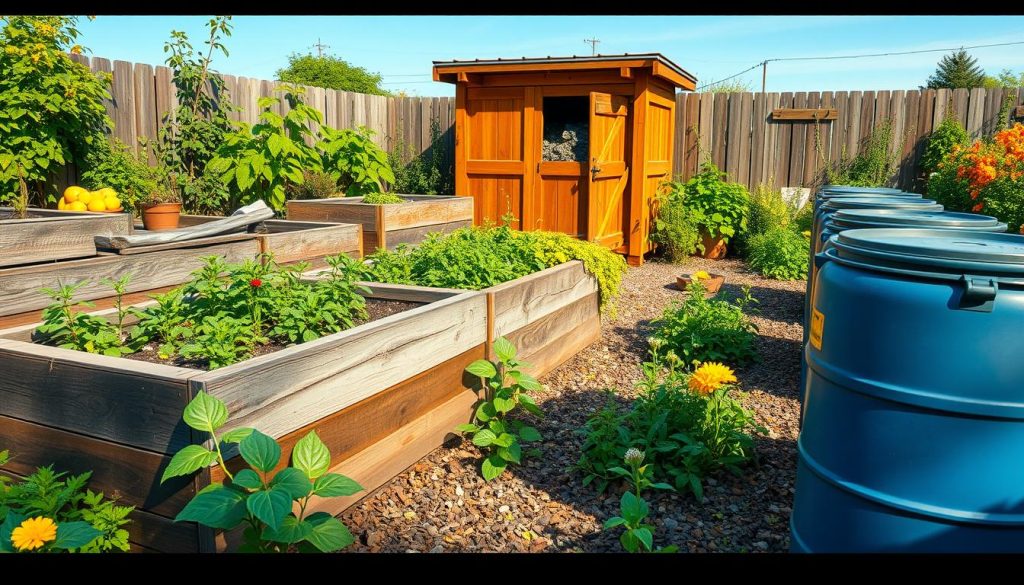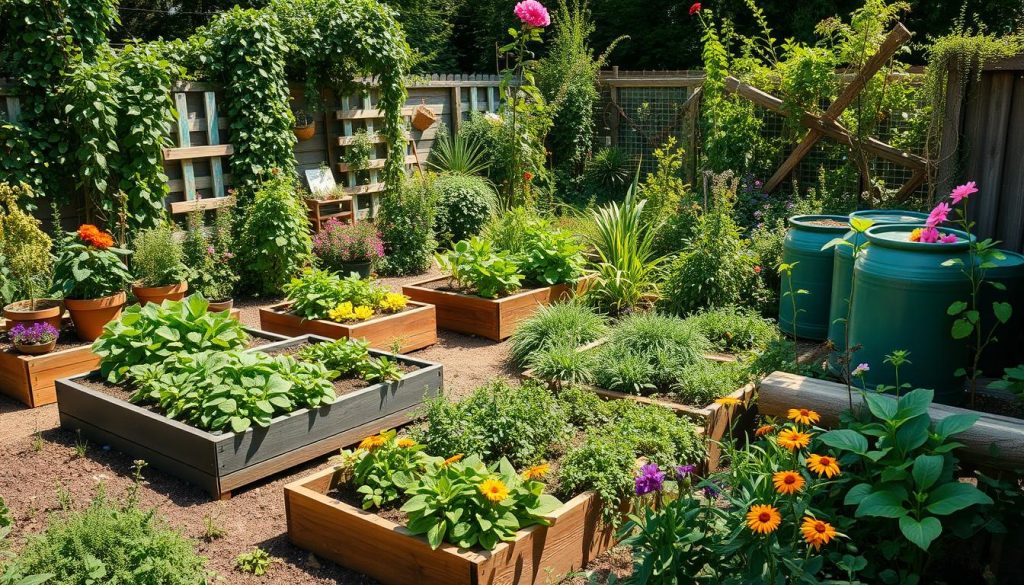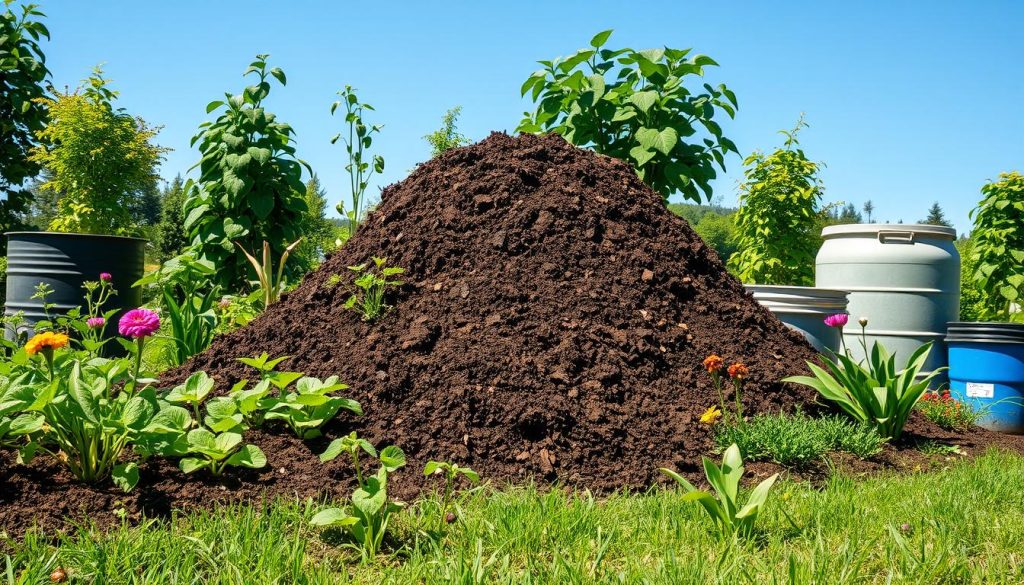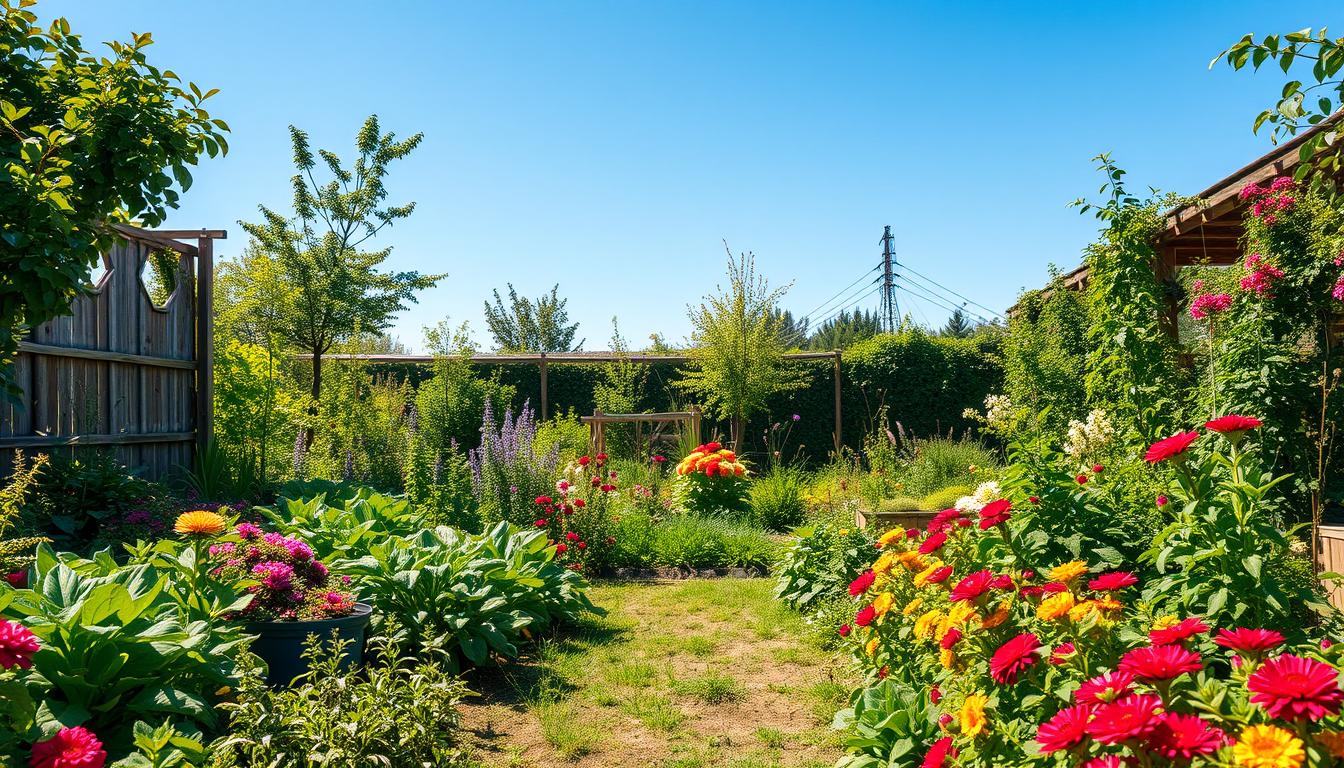I’m excited to share my journey to a sustainable garden. I’ve learned how important it is to reduce waste. This guide will help you make your garden zero-waste.
This guide will cover planning, soil health, and pest management. We’ll focus on year-round zero-waste gardening. Follow these tips to create a beautiful, eco-friendly garden.
Understanding Zero-Waste Gardening Principles
As I explore gardening, I’ve learned how crucial it is to cut down on waste and use eco-friendly methods. Zero-waste gardening is all about reducing waste and using organic ways to make a garden sustainable. It helps us lessen our impact on the environment and make our gardens healthier.
Zero-waste gardening is all about three main things: reducing, reusing, and recycling. It means picking the right plants, saving water, and fighting pests naturally. Some important steps for a zero-waste garden include:
- Composting food waste and yard trimmings to create nutrient-rich soil
- Using rainwater harvesting systems to collect and conserve water
- Implementing organic gardening techniques, such as crop rotation and companion planting
By following these steps, you can make a garden that’s not only good for the planet but also gives you lots of fresh food. I’m excited to share my journey with you and show the many perks of this green way of gardening.

Planning My Garden Layout
Creating a sustainable garden starts with a good plan. It’s about reducing waste and using eco-friendly methods. By looking at my space and picking the right plants, I can make a garden that’s both beautiful and green.
First, I check my garden’s space to plan the best layout. I think about sunlight, shade, and soil type. Choosing plants that fit my climate and soil helps my garden grow well. Here are some tips for space assessment:
- Watch how much sunlight and shade your garden gets each day
- Check your soil’s pH level to know its acidity or alkalinity
- Find out which plants are best for your climate and soil
After assessing my space, I pick the right plants for my garden. I look for plants that are not just pretty but also good for the environment. Using companion planting helps my garden grow diverse and strong. Here are some examples:

By using these green gardening practices, I make my garden sustainable and full of life. Always choose plants that match your climate and soil. And don’t hesitate to be creative with your garden’s design. With planning and imagination, you can make a stunning, eco-friendly garden that’s good for the planet.
Soil Health and Management
To make your garden thrive, focus on soil health and management. Use eco-friendly gardening practices and organic techniques. This way, you can keep your soil healthy, cut down on waste, and avoid harmful chemicals.
Organic matter is crucial for soil health. You can add it by composting. Composting turns food waste into a nutrient-rich soil amendment. It also helps reduce landfill waste. Consider using natural fertilizers like manure or green sand and rotate crops to keep the soil fertile.
Techniques for Healthy Soil
- Test your soil regularly to determine its pH level and nutrient content
- Use organic amendments, such as compost or well-rotted manure, to improve soil structure and fertility
- Implement conservation tillage to reduce soil erosion and promote soil health
By following these tips and practices, you can have a healthy garden. It will benefit you and the environment. Organic gardening, like using natural pest control and avoiding synthetic fertilizers, also helps keep the soil healthy and reduces waste.

Water Conservation Strategies
As I work on my zero-waste garden, I’ve learned how key water conservation is. Using green gardening tips, like cutting down on waste, helps the environment. Harvesting rainwater is a great way to save water for plants, cutting down on city water use.
Mulching is another smart move for keeping soil moist. It involves covering the soil with organic stuff like wood chips or straw. This keeps moisture in and weeds out. Also, picking plants that don’t need much water helps save water and supports eco-friendly gardening.
- Using drip irrigation systems to deliver water directly to the roots of plants
- Avoiding overwatering, which can lead to water waste and soil erosion
- Monitoring weather forecasts to avoid watering during periods of heavy rainfall
By following these tips and using zero-waste gardening methods, I can make my garden water-efficient. This supports sustainability and cuts down on waste.
Pest Management Without Chemicals
I’ve learned the value of managing pests without chemicals. This approach keeps my garden healthy and sustainable. It also supports environmentally friendly gardening. By using sustainable tips, I create a balanced ecosystem that needs less outside help.
I’ve started using integrated pest management (IPM) techniques. IPM means understanding pests’ life cycles and using various methods to control them. This includes introducing beneficial insects, using barriers, and keeping the garden clean. IPM helps me use fewer chemical pesticides and makes my garden stronger.
Attracting Beneficial Insects
Attracting beneficial insects is key in IPM. Insects like ladybugs and lacewings eat common pests, keeping the ecosystem balanced. To attract them, I plant nectar-rich flowers like marigolds and dill. This way, I encourage these helpful insects to stay and help control pests.
Homemade Remedies
I’ve also tried homemade remedies to fight pests. Solutions like neem oil and garlic spray work well without harming the environment. Using these eco-friendly options helps me keep my garden healthy and sustainable.
- Use neem oil to control aphids and whiteflies
- Make a garlic spray to repel pests and fungi
- Introduce beneficial insects to prey on common pests
By following these sustainable tips, I’ve made my garden a thriving ecosystem. It’s a place that wastes less and supports green gardening practices.
Seasonal Tips for Year-Round Gardening
I love gardening without waste all year. In winter, I get ready for spring by
preparing the soil, planting hardy greens, and protecting delicate plants
from the cold. When spring comes,
I choose and plant a variety of vegetables, herbs, and flowers
to make my garden rich and full.
In summer and fall,
I focus on picking and saving food
to waste less. I use canning, dehydrating, and freezing to keep food fresh. This way, I enjoy my garden’s bounty all year. This guide has given me fresh, organic food and helped me live greener.

